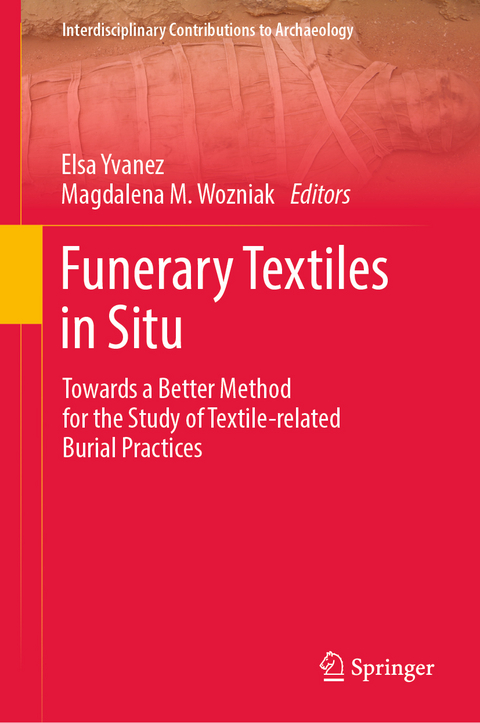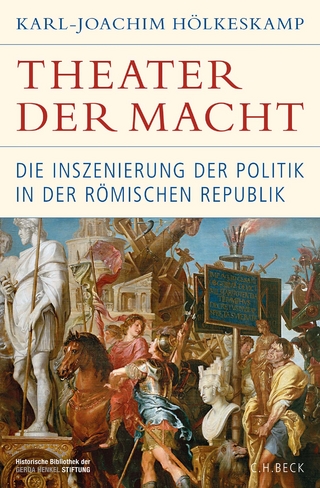
Funerary Textiles in Situ
Springer International Publishing (Verlag)
978-3-031-69460-8 (ISBN)
- Noch nicht erschienen - erscheint am 07.01.2025
- Versandkostenfrei
- Auch auf Rechnung
- Artikel merken
This book explores the role of textiles in death to investigate questions into how the body was prepared before the funeral, how the body was seen and perceived by its relatives and community, and the role of textiles in its metamorphosis into a deceased. The volume's geographic coverage is broad, encompassing areas where textile and skeletal conservation is optimal (the ancient Nile Valley) and areas where only minute fragments could be preserved adhering to metal objects. The case-studies cover Egypt, Sudan, Greece, the Iberian Peninsula, Scandinavia, and Central Europe, ranging from the 12th century BCE to the end of the 19th century CE. Going beyond this geohistorical frameworks, the book presents new methods for the study, retrieval and conservation of funerary textiles in situ during excavations. It offers useful tools for future research in both textile archaeology and bioarcheology and promote interdisciplinary collaborations between the two fields for a better understanding of burial practices. Contributors to this volume include experts from the fields of bioanthropology, archaeology, textile research and conservation.
Chapters 8 and 13 are available open access under a Creative Commons Attribution 4.0 International License via link.springer.com.
Elsa Yvanez is an archaeologist specialised in the textile production of ancient Sudan and Nubia, in the chaîne opératoire and economic significance of spinning and weaving, as well as in the use of textiles for clothing and burial. After a Marie Sklodowska-Curie fellowship at the Centre for Textile Research, University of Copenhagen (TexMeroe MSCA 743420), she conducted the Unravelling Nubian Funerary Practices project at the Polish Centre of Mediterranean Archaeology, University of Warsaw. She is now leading the ERC project Fashioning Sudan. Archaeology of dress along the Middle Nile at the University of Copenhagen (ERS StG 101039416).
Magdalena M. Wozniak is a researcher at the Polish Centre of Mediterranean Archaeology, University of Warsaw. Her research focuses on textile production, cloth consumption and the role of textiles in the visual expression of identity in medieval Sudan. She holds a PhD in Archaeology from Paris-Sorbonne University. In 2016-2019 she was awarded a POLONEZ post-doctoral grant from the National Science Centre, Poland and a Marie Sklodowska-Curie grant from the European Union's Horizon 2020 research and innovation programme for the project "Nubian Textiles: craft, trade, costume and identity in the medieval kingdom of Makuria.
Acknowledgements.- Content warning.- Chapter 1. Introduction - Funerary Textiles in situ. Archaeological Perspectives from Europe and the Nile Valley (Elsa Yvanez and Magdalena M. Wozniak).- Part I: Aspects of theory and methods.- Chapter 2. Theoretical Approaches to the Functions of Textiles in Graves. Case Studies from 1000 BCE-1000 CE in Central Europe (Karina Grömer).- Chapter 3. Fabrics and Funerals: An Ethnographic Enquiry (Estella Weiss-Krejci).- Part II: Case studies in Europe and the Nile Valley.- Chapter 4. Silk Textiles in Funerary Liturgical Garments in Poland (17th-19th Centuries) (Dawid Grupa).- Chapter 5. Research on Post-Medieval Funerary Attire: Ethics, Challenges, and Successful Methods in Studying Coffin Textiles Found Below Finnish Church Floors (Sana Lipkin).- Chapter 6. Textiles and Bones on Site: A First-Hand Experience from the Cemeteries at Naqlun (Egypt) and Crypts at Old Dongola (Sudan) (Barbara Czaja and Robert Mahler).- Chapter 7. Grave Concerns: The Complexity of Recovery, Documentation, and the Study of Funerary Textiles from Ancient Egyptian Inhumations at Saqqara (Iwona Kozieradzka-Ogunmakin).- Chapter 8. Wrapping Practices in Medieval Sudan. Case Studies from Gebel Adda (Magdalena Wozniak).- Chapter 9. Conservation Approaches for Pyre-Burial Textiles Excavated in Greece (Christina Margariti, Stella Spantidaki, Maria Kinti, and Tina Chanialaki).- Chapter 10. The Stronghold Has Become a Grave - Preliminary Analysis of Fabrics from Early Medieval Trzcianka, Janów Commune, Poland (Malgorzata Grupa and Tomasz Kozlowski).- Chapter 11. Two Mycenaean Textile Imprints from Tomb XXI at Deiras, Argos (Greece) (Malgorzata Siennicka).- Chapter 12. Naked Graves? Thoughts on the Recording and Reconstruction of Funerary Attire in the Early Iron Age of Southwestern Iberia (Francisco Gomes).- Part III: Tools for the in situ analysis of funerary textiles.- Chapter 13. Protocol for the Study and Analysis of Funerary Textiles in situ (Elsa Yvanez, Valentina Turina, and editorial committee).- Index.
| Erscheint lt. Verlag | 7.1.2025 |
|---|---|
| Reihe/Serie | Interdisciplinary Contributions to Archaeology |
| Zusatzinfo | IX, 352 p. 145 illus., 132 illus. in color. |
| Verlagsort | Cham |
| Sprache | englisch |
| Maße | 155 x 235 mm |
| Themenwelt | Geisteswissenschaften ► Archäologie |
| Geschichte ► Allgemeine Geschichte ► Altertum / Antike | |
| Sozialwissenschaften ► Ethnologie | |
| Schlagworte | Ancient textiles • Antiquity textiles • Archaeological Methods • Archaeology of death • Body wrappings • burial practices • Egypt and Sudan archaeology textiles • European archaeology textiles • Iron age cloth textiles • Medieval fabrics textiles |
| ISBN-10 | 3-031-69460-0 / 3031694600 |
| ISBN-13 | 978-3-031-69460-8 / 9783031694608 |
| Zustand | Neuware |
| Haben Sie eine Frage zum Produkt? |
aus dem Bereich


